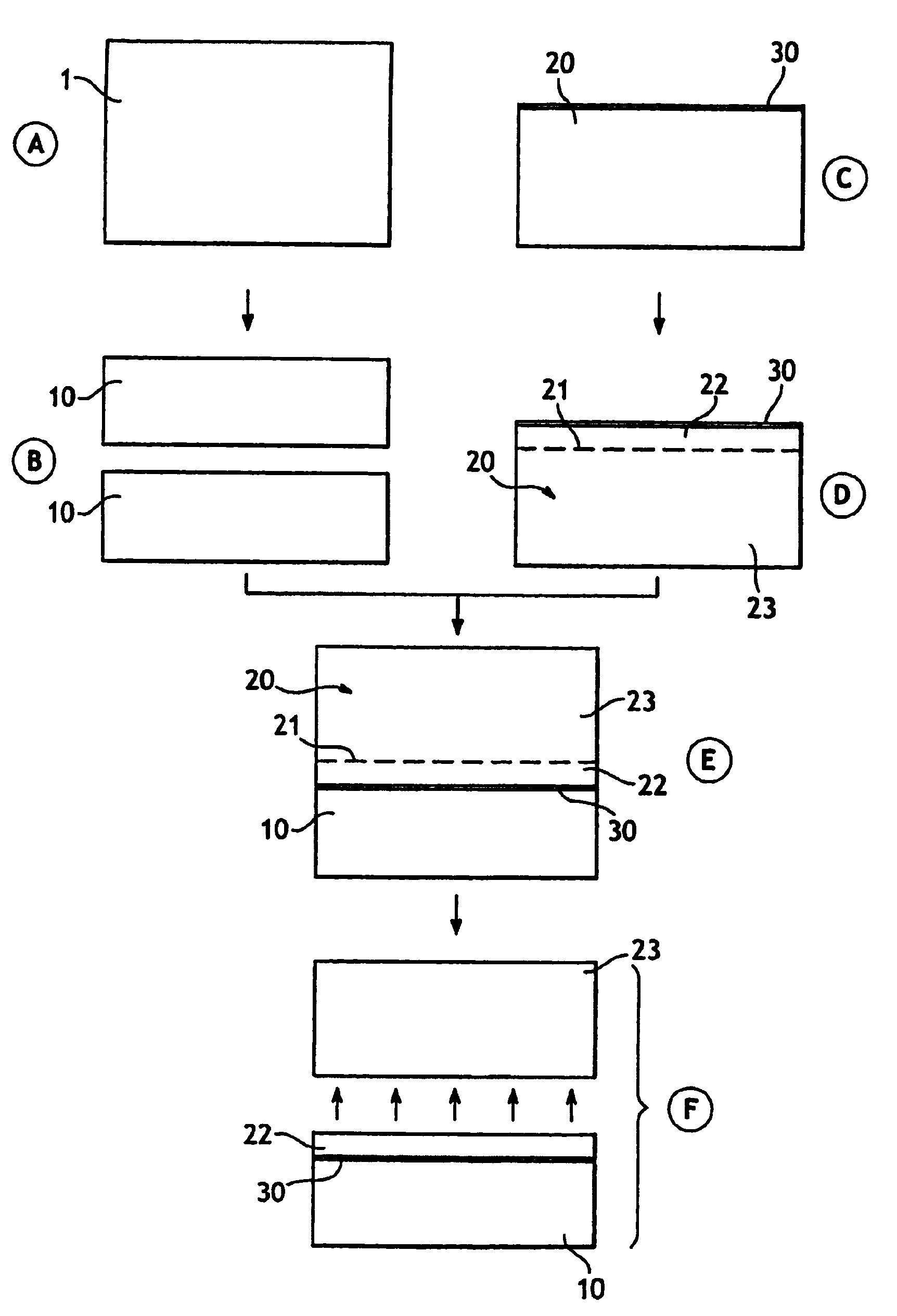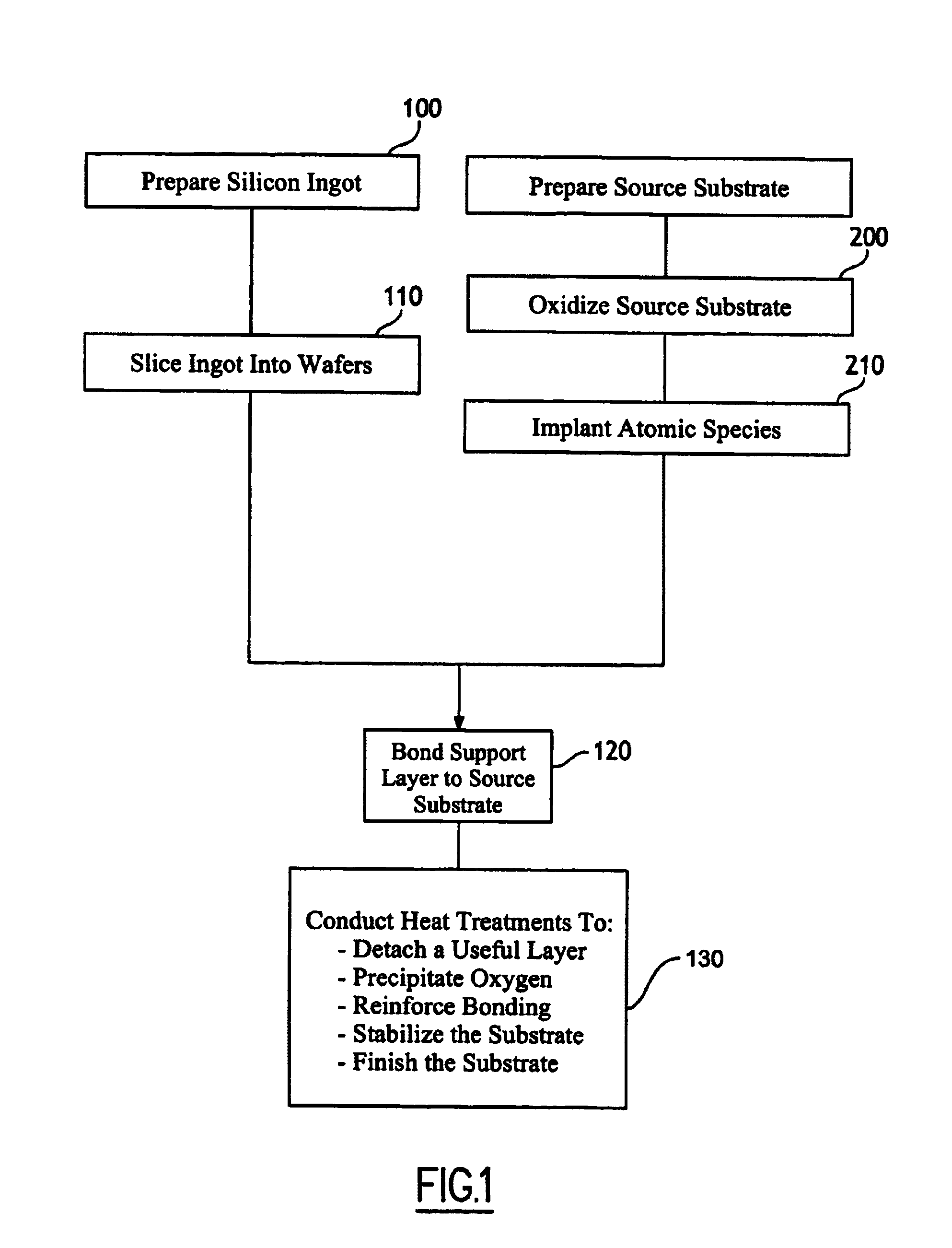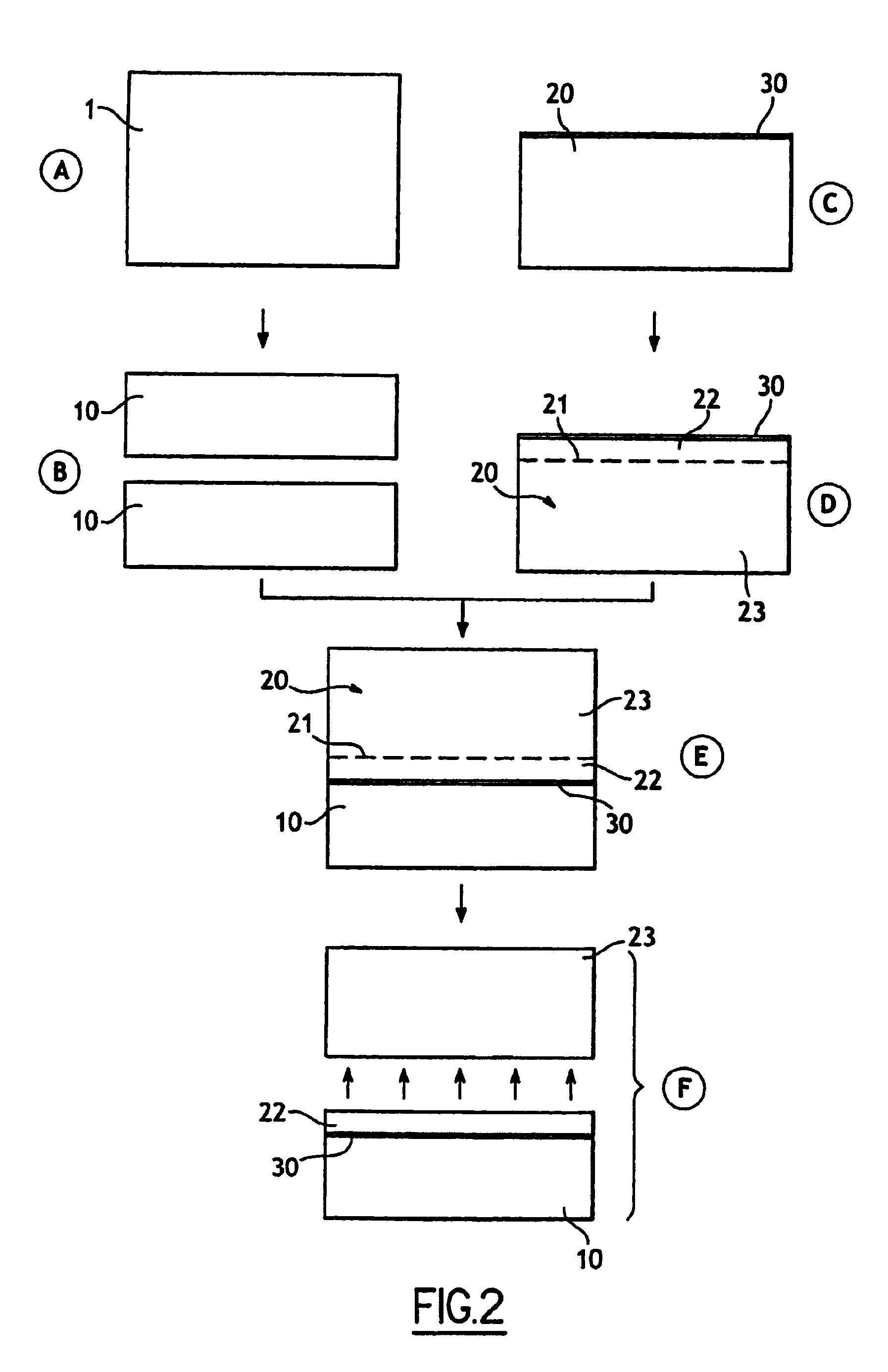Method for limiting slip lines in a semiconductor substrate
a technology of semiconductor substrates and slip lines, which is applied in the direction of semiconductor/solid-state device manufacturing, basic electric elements, electric devices, etc., can solve the problems of increasing production capacity, limiting the negative effect of polishing, and undesirable slip lines in the treated wafers, so as to reduce the generation of slip lines
- Summary
- Abstract
- Description
- Claims
- Application Information
AI Technical Summary
Benefits of technology
Problems solved by technology
Method used
Image
Examples
Embodiment Construction
[0020]FIG. 1 is a diagram of the steps in a substrate fabrication method, and FIGS. 2A–2F are simplified block diagrams of the different states of the semiconductor material during implementation of the method. In FIG. 2A a Czochralski (CZ), Magnetic Field Applied Czochralski (MCZ), or like silicon ingot 1 is grown using a conventional technique (see also FIG. 1, step 100). The ingot pulling conditions are such that a certain concentration of interstitial oxygen exists in the material which is formed. In accordance with the present invention, the concentration of interstitial oxygen must be sufficient (of the order of 12 to 14 new ppma in a standard CZ substrate) to guarantee that a minimum concentration of oxygen precipitates is formed after carrying out the heat treatment.
[0021]The ingot 1 is sliced (step 110) by sawing it into wafers 10 (FIG. 2B) of a given thickness and then polished using techniques that are well known to the skilled person. FIG. 2B illustrates a first implemen...
PUM
 Login to View More
Login to View More Abstract
Description
Claims
Application Information
 Login to View More
Login to View More - R&D
- Intellectual Property
- Life Sciences
- Materials
- Tech Scout
- Unparalleled Data Quality
- Higher Quality Content
- 60% Fewer Hallucinations
Browse by: Latest US Patents, China's latest patents, Technical Efficacy Thesaurus, Application Domain, Technology Topic, Popular Technical Reports.
© 2025 PatSnap. All rights reserved.Legal|Privacy policy|Modern Slavery Act Transparency Statement|Sitemap|About US| Contact US: help@patsnap.com



